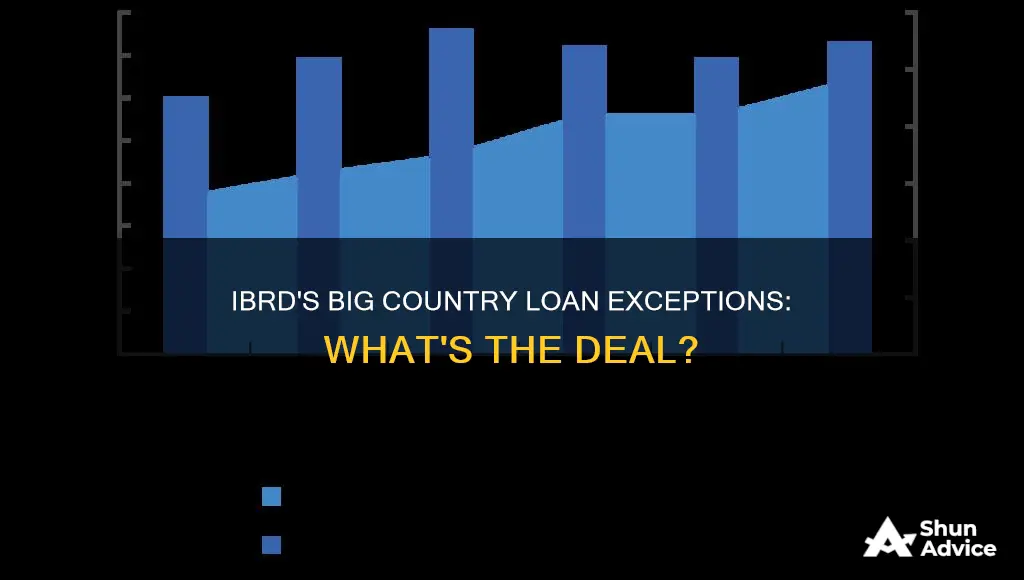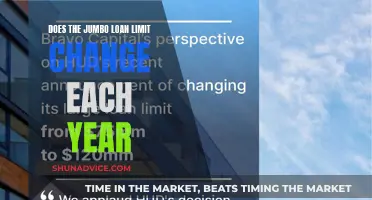
The International Bank for Reconstruction and Development (IBRD) is a global development cooperative owned by 189 member countries. It is the largest development bank in the world and provides loans, guarantees, risk management products, and advisory services to middle-income and creditworthy low-income countries. The IBRD is the lending arm of the World Bank Group and was established in 1944 to help finance the reconstruction of European nations devastated by World War II. Since then, its mandate has expanded to advancing worldwide economic development and eradicating poverty. The IBRD offers flexible loans, grants, risk guarantees, financial derivatives, and catastrophic risk financing. While the IBRD has certain restrictions on its lending practices, such as not providing loans in competition with private capital, it does make exceptions to lending limits and offers tailored repayment schedules to meet specific project needs.
| Characteristics | Values |
|---|---|
| Year of establishment | 1944 |
| Mission | To finance the reconstruction of European nations after World War II; to advance worldwide economic development and eradicate poverty |
| Ownership | 189 member countries |
| Offerings | Loans, guarantees, risk management products, and advisory services |
| Lending | Over $500 billion in loans since 1946 |
| Borrowers | Middle-income and creditworthy low-income countries |
| Lending restrictions | Cannot provide loans in competition with private capital; loans must be tied to specific projects |
| Lending incentives | Volume top-ups, longer loan tenors, faster disbursals, or exceptions to lending limits |
| Lending products | IBRD Flexible Loan (IFL) |
| Lending focus areas | Clean energy, climate change, low-carbon development, climate resilience |
What You'll Learn

IBRD's lending limits and exceptions
The International Bank for Reconstruction and Development (IBRD) is a global development cooperative owned by 189 member countries. It is the largest development bank in the world and provides loans, guarantees, risk management products, and advisory services to middle-income and creditworthy low-income countries. The IBRD is the lending arm of the World Bank Group and was established in 1944 to finance the reconstruction of European nations after World War II.
The IBRD offers flexible loans with customizable repayment terms to meet the specific needs of borrowers. The average repayment maturity is 20 years, with a final maturity of 35 years. However, for projects addressing global challenges with cross-border externalities, the maximum loan maturity can be extended up to 50 years. The IBRD also provides grants, risk guarantees, financial derivatives, and catastrophic risk financing.
The IBRD's lending limits are determined by its financial objective, which is to earn adequate net income to ensure its financial strength and sustain its development activities. It aims to build reserves, diversify funding sources, hold a large portfolio of liquid investments, and limit various risks, including credit, market, and liquidity risks. The IBRD's lending decisions consider portfolio concentration risk, where a small group of borrowers accounts for a large share of outstanding loans. To manage this risk, the IBRD imposes an exposure limit for loans outstanding plus the present value of guarantees to a single borrowing country.
While the IBRD generally lends to middle-income developing countries, it has shown flexibility in addressing global challenges. For example, it has considered rebooting its Global Public Goods Fund as the Liveable Planet Fund (LPF), providing concessional finance to buy down interest rates for loans addressing global challenges. Additionally, the IBRD has expressed interest in increasing climate lending and supporting large client countries in accessing finance for climate mitigation through initiatives like the Global Strategic Asset Promotion (GSAP).
The IBRD's lending decisions are subject to approval by its Executive Directors, who also receive reports from the Independent Evaluation Group to evaluate the extent to which operations have met their objectives. The IBRD's lending generally falls into two categories: investment or development policy lending. Investment lending finances goods, works, and services in support of economic and social development projects across various sectors.
Air Force Loan Repayment: What's the Current Status?
You may want to see also

IBRD's triple-A credit rating
The International Bank for Reconstruction and Development (IBRD) has maintained a triple-A rating since 1959. This high credit rating allows the IBRD to borrow at a low cost and offer middle-income developing countries access to capital on favourable terms. The IBRD's triple-A rating is a result of its strong financial position, governance structure, and critical role in achieving global development goals.
The IBRD's credit rating enables it to raise funds in the capital markets by issuing bonds. In 2011, the IBRD raised US$29 billion in capital from bond issues made in 26 different currencies. This allows the IBRD to provide loans, guarantees, risk management products, and advisory services to middle-income and creditworthy low-income countries. The IBRD has provided more than $500 billion in loans to alleviate poverty around the world since 1946.
The IBRD's triple-A rating is, however, not without risks. In 2023, Fitch warned that a default by Ukraine on its international development loans could likely cost the IBRD its triple-A credit rating. This is due to the significant exposure that the IBRD and other multilateral development banks have to Ukraine following Russia's invasion in 2022. The impact of a potential downgrade on the IBRD's credit rating is expected to be significant, with negative consequences for its ability to borrow and lend.
Despite this risk, the IBRD's triple-A rating remains a key strength. It allows the IBRD to continue its mission of advancing worldwide economic development and eradicating poverty. The IBRD's ability to raise funds at a low cost is essential for providing middle-income developing countries with access to capital and supporting their development projects.
In conclusion, the IBRD's triple-A credit rating is a critical enabler for its operations and contributes to its impact on global development. The IBRD's ability to maintain this rating over the long term will be crucial for its sustainability and effectiveness in addressing global challenges.
Devry Lawsuit: Am I Eligible for Loan Discharge?
You may want to see also

IBRD's loan terms and conditions
The International Bank for Reconstruction and Development (IBRD) is a global development cooperative owned by 189 member countries. Established in 1944, the IBRD is the lending arm of the World Bank Group and provides loans, guarantees, risk management products, and advisory services to middle-income and creditworthy low-income countries.
IBRD loans are tied to specific projects and are typically used to fund investments that aim to improve transportation, infrastructure, education, domestic policy, and the environment. The bank also offers flexible loans, grants, risk guarantees, financial derivatives, and catastrophic risk financing.
The IBRD Flexible Loan (IFL) is the leading loan product offered by the World Bank. It allows borrowers to customize their repayment schedules to meet specific project needs, with an average repayment maturity of 20 years and a final maturity of up to 35 years. The cost of the IFL reflects the IBRD's triple-A credit rating and includes interest rates, front-end fees, and commitment fees.
IBRD makes efforts to address global challenges, such as climate change, by incentivizing countries to prioritize projects that offer global benefits. For instance, the Bank has considered transforming its Global Public Goods Fund into the Liveable Planet Fund (LPF) to promote concessional finance for loans addressing global issues. Additionally, the IBRD provides support to countries transitioning from low-income to middle-income status, helping them sustain progress in reducing poverty and expanding prosperity.
Tesla Loan Prepayment: Penalty or Peace of Mind?
You may want to see also

IBRD's role in addressing climate change
The International Bank for Reconstruction and Development (IBRD) is a global development cooperative owned by 189 member countries. As the largest development bank in the world, it supports the World Bank Group's mission of advancing worldwide economic development and eradicating poverty.
IBRD has maintained a triple-A rating since 1959, allowing it to borrow at low cost and provide middle-income developing countries access to capital on favourable terms. This helps ensure that development projects are carried out in a more sustainable manner, complementing or catalyzing private financing.
In recent years, IBRD has placed a stronger focus on addressing climate change. They have engaged in discussions with investors about their approach to climate mitigation and adaptation, including topics such as greenhouse gas accounting and carbon pricing. IBRD has also launched initiatives to raise awareness among investors about their activities to mainstream climate action, targeting the issuance of Sustainable Development Bonds.
Additionally, IBRD is working to meet the needs of all clients, regardless of income level, and to reverse its diminishing relevance in upper-middle-income countries. They are committed to directing at least 50% of their future lending towards addressing climate change, with a focus on supporting countries in incorporating climate mitigation and adaptation into their national planning.
FDIC-Insured Savings and Loans: Are Your Finances Protected?
You may want to see also

IBRD's role in global knowledge transfer
The International Bank for Reconstruction and Development (IBRD) is a global development cooperative owned by 189 member countries. Established in 1944, the IBRD is the lending arm of the World Bank Group, which is composed of five closely associated institutions, including the IBRD. The other four institutions are the International Development Association (IDA), the International Finance Corporation (IFC), the Multilateral Investment Guarantee Agency (MIGA), and the International Centre for Settlement of Investment Disputes (ICSID).
The IBRD's role in global knowledge transfer is significant. As a development bank, it provides knowledge and advisory services to governments at the national and subnational levels, including in public debt and asset management. These advisory services help governments, official sector institutions, and development organizations build institutional capacity, protect and expand financial resources, and improve the investment climate. The IBRD also provides technical support and expertise at each stage of a project, helping to facilitate the exchange of knowledge and lessons between countries.
The IBRD's knowledge transfer role is particularly important in the context of its partnership with Middle-Income Countries (MICs) and creditworthy poorer countries. MICs often have limited access to private finance, making them vulnerable to economic shocks and cross-border crises such as climate change, forced migration, and pandemics. The IBRD provides these countries with a combination of financial resources, knowledge, and technical services. For example, the IBRD helped India meet its solar energy targets by partnering with the country to develop the market for rooftop solar.
The IBRD also plays a role in global knowledge transfer by coordinating responses to regional and global challenges. It works closely with all institutions of the World Bank Group and the public and private sectors in developing countries to reduce poverty and build shared prosperity. The IBRD's knowledge transfer role is further enhanced by its engagement with countries as challenges emerge and evolve, through innovative financial products and a wide range of global forums.
In recent years, the IBRD has expanded its focus to include addressing global challenges such as climate change. The IBRD has considered rebooting its Global Public Goods Fund as the Liveable Planet Fund (LPF), which would provide concessional finance to buy down interest rates for loans addressing global challenges. The IBRD's high credit rating and access to international capital markets allow it to offer middle-income developing countries favourable loan terms and catalyze private financing, further contributing to its role in global knowledge transfer.
Life Insurance Loan: Impact on Premium Payments?
You may want to see also
Frequently asked questions
The International Bank for Reconstruction and Development (IBRD) is a global development cooperative owned by 189 member countries. It is the largest development bank in the world and supports the World Bank Group's mission by providing loans, guarantees, risk management products, and advisory services to middle-income and creditworthy low-income countries.
The IBRD's lending decisions are based on a country's per capita income and creditworthiness. However, for certain small island economies, other factors such as size may also be considered when determining eligibility for IBRD loans. The IBRD does not provide loans in competition with private capital, and its loans are typically tied to specific projects.
IBRD loans offer flexible repayment terms, allowing borrowers to customize their repayment schedules to meet specific project needs. The IBRD also provides technical support, expertise, and advisory services to borrower countries throughout the project.
The IBRD finances investments across all sectors but focuses on projects that improve transportation, infrastructure, education, domestic policy, and environmental conservation. Additionally, the IBRD supports projects addressing global challenges, such as climate change and clean energy investments.







